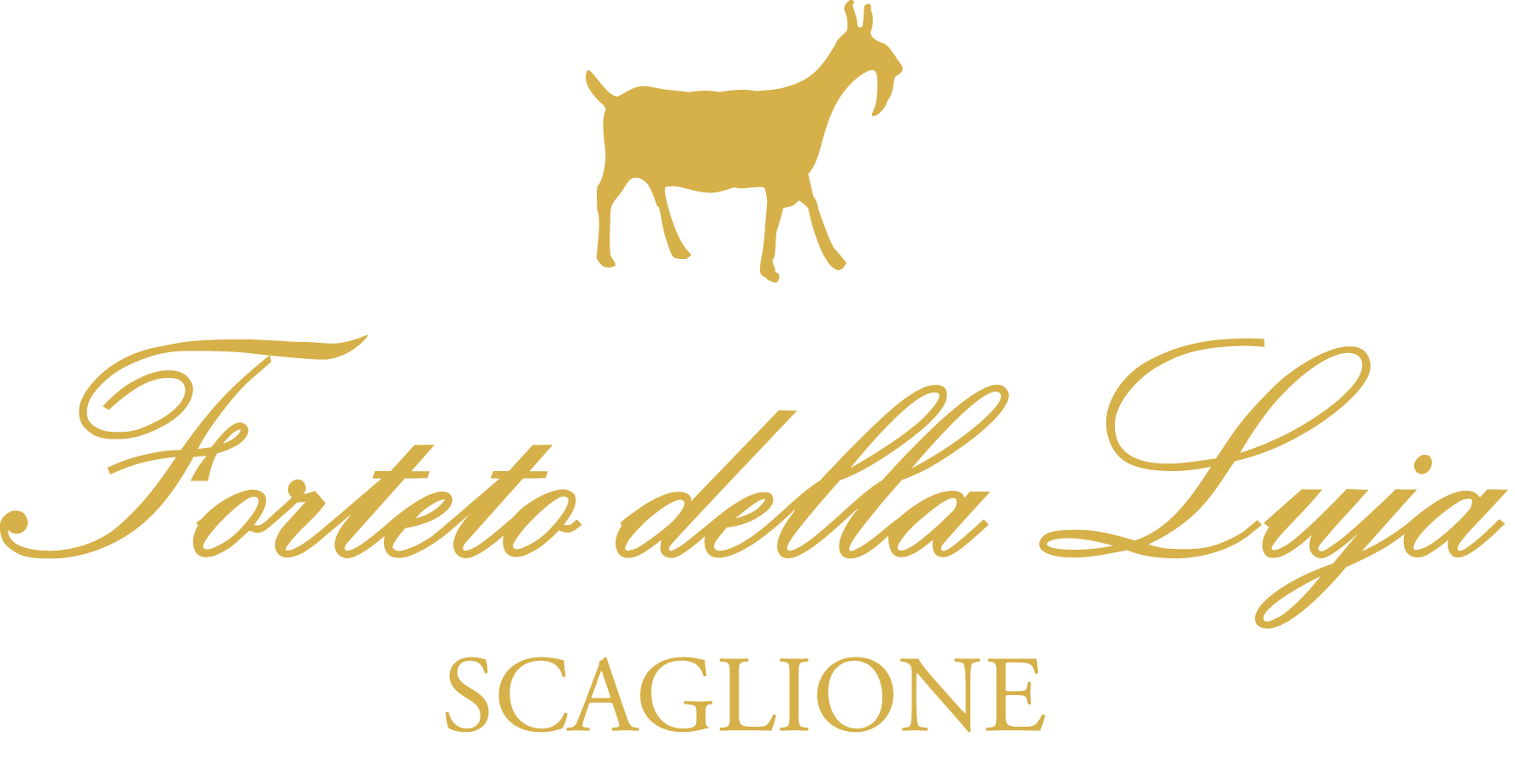The Novelli Scaglione Family
From the origins to today
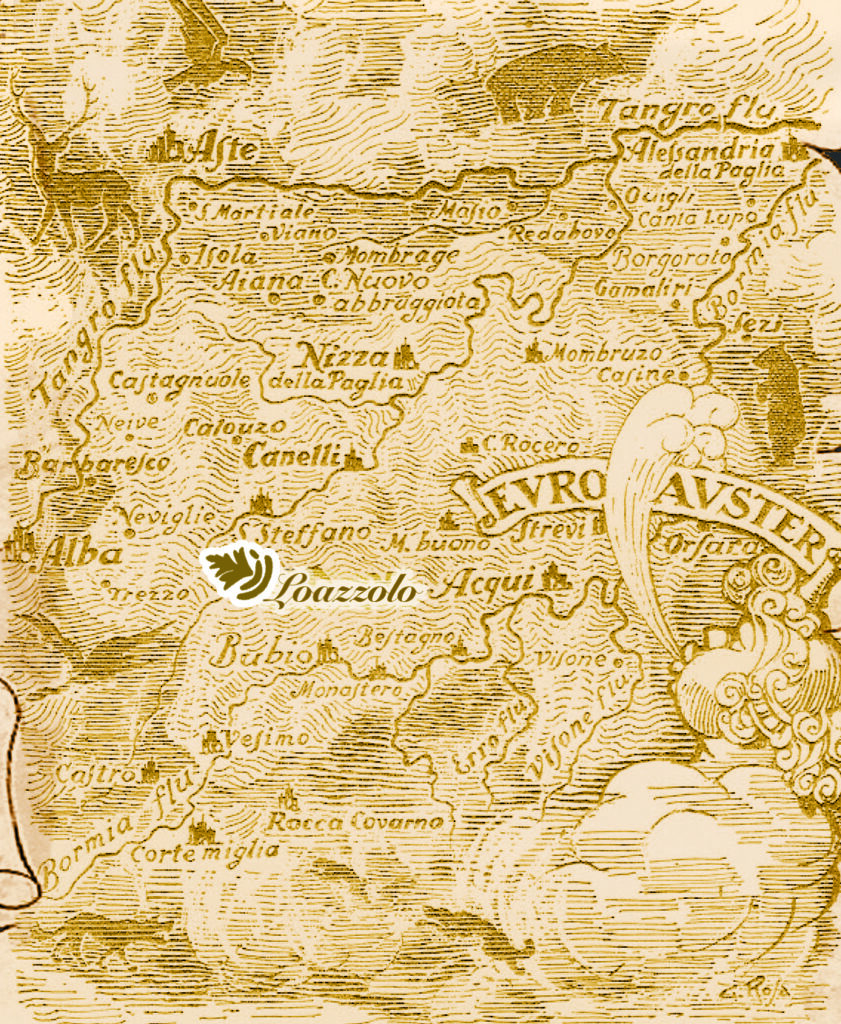
1790
The first rural nucleus built in these places dates back to 1790: a small single-storey house, which still remains today, with a living room, a bedroom, a single window and a single door.
It is the house where the Novelli family moved coming from another side of the hill. The Novelli were laborers, they cultivated the land and lived in these houses built with their own hands using, even for the roof, the Langa stone, the raw material of the place.
The buildings were all located on land owned by the Gancia counts, still producers of very renowned wines as well as the well-known sparkling wine Metodo Classico.

Tommaso Novelli – Loazzolo 1935
Between '800 and '900
Three generations later, towards the middle of the nineteenth century, the Novelli family had the opportunity to buy this first residential nucleus from the Gancia family, who had begun to abandon most of the properties. The reason was the fiscal policy of that time, adopted by the Savoy to meet the considerable expenses due to the wars of independence. A policy that consisted in the application of a patrimonial tax on the land, which naturally involved the large landowners of the Savoy kingdom first, who were therefore pushed to parcel out and sell also in Langa, Roero and Monferrato.
In 1851, after the purchase of the land, the Novelli family enlarged the house, which became two-storey to which a residential wing was added in 1910 and, in 1947, porches. A building, therefore, erected in different centuries with different architectural styles that are clearly identifiable. The part of the twentieth century is completely plastered, yellow with pastel blue windows, typical colors of the Langhe; the older parts are instead in bare stone, dry, without cement and with very thick walls.
Although the Novelli family has been from the beginning, and for many generations, producers of wine for self-consumption and for a small local market, it is the great-grandfather, Tommaso Novelli, who was the first to spread Moscato Passito, which today represents our flagship wine. His great-grandfather was a farmer with a slightly more refined manner than average, with an innate taste for beauty, but with little familiarity with numbers: on the label he wrote with letters not only the name of the wine but also the vintage. If, for example, he had to write 1937, the date became such a long word that the elongated label ended up encircling almost the entire bottle.
His great-grandfather Tommaso had an only daughter, Teresa, so the name Novelli was destined to become extinct. In the thirties, Teresa met Egisto Scaglione, a handsome man, passionate about motorcycles and owner of a family farm himself.
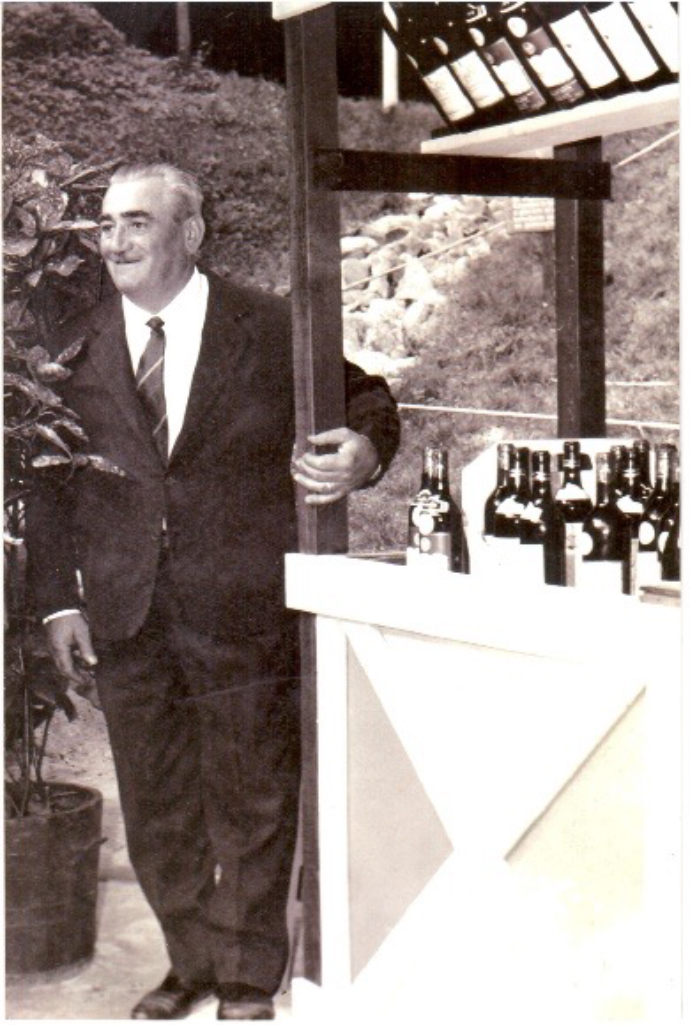
Egisto Scaglione Expo Italia ’61 – Torino 1961
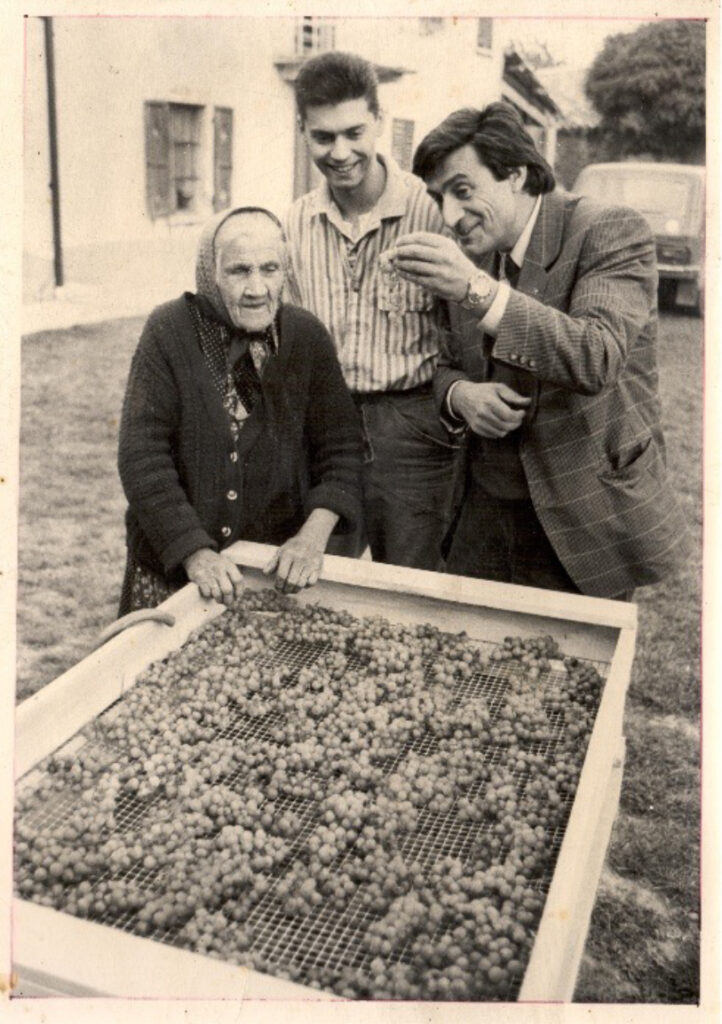
Egidia Novelli, Giovanni e Giancarlo Scaglione – Loazzolo 1985
Towards the 2000s
Teresa and Egisto married at the end of the thirties. A couple of years later, in 1941, Giancarlo Scaglione was born. Egisto, who found himself managing two farms, Scaglione and Novelli, preferred to have his son study, who graduated in oenology in 1961 and immediately began working in the two wineries.
The Sixties are also those of the generation gap. Young people are beginning to have the first differences regarding the management of the cellars. In 1964 my father decided to go to work in the cooperative winery of Castagnole delle Lanze and, in ’65, in that of Cossano Belbo. Years that saw the birth of the Peasants’ Party and trade union associations, such as Coldiretti, which gave dignity to the work of winegrowers, forced until then to sell immediately and largely the production of grapes for fear that it would deteriorate and therefore without having the opportunity to fully enhance it. A story experienced by Giancarlo in the first person since, within the cooperative winery, he was an oenologist and production manager. In the meantime, he graduated in microbiology, became an expert connoisseur of wine fermentation and, in the early seventies, was called to teach at the Alba Wine School. In 1977 he returned to his old passion for the vineyard and wine and became production manager at Gancia, at the time one of the most prestigious companies in Monferrato, where he remained for a few years. He resigned in the early eighties preferring to work as a consultant and came into contact with the best and most important producers in Piedmont and Monferrato including Giacomo Bologna, who relaunched Barbera, the Coppo brothers, Michele Chiarlo, Bruno Giacosa.
In 1985 Giancarlo, after the death of his father and grandfather and having inherited the Loazzolo farmhouse, decided to take over the management even if with very old vineyards and equipment and with an almost unknown Moscato Passito. Giacomo Bologna was looking for someone who could produce a good Moscato Bianco. With the support of Bologna, which undertook to distribute it on the market, Giancarlo began the production of Moscato Passito Piasa Rischei in a serious way, embellished the label and brought it to the tables of the best starred restaurants in Italy.
In 1988 Luigi Veronelli came to visit our winery and, judging our Moscato Bianco very positively, suggested that we ask for the municipal denomination, that is, of a single municipality, not easy to obtain, but which arrived in May 1992 also thanks to Veronelli himself, who wrote about it in a laudatory manner. Moscato Bianco di Loazzolo boasts the smallest municipal denomination existing in Italy, produced – due to the very restrictive DOC regulation – on an area of less than three hectares of land, with steep, old vineyards well exposed to the sun and a very limited yield, less than 2750 liters per hectare.
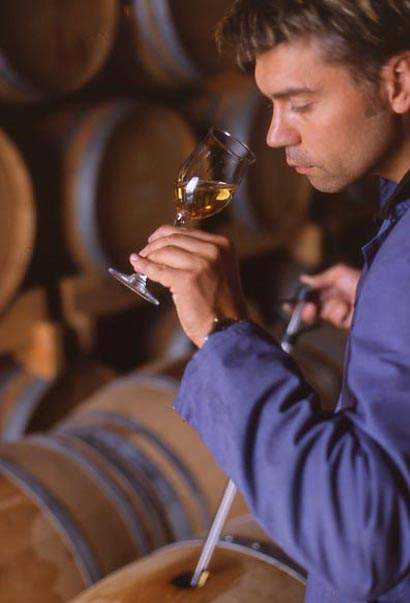
GIOVANNI SCAGLIONE
I was born among these vineyards and it is here that I used to come to play, when I was a kid, and I can’t explain whether it is the familiarity I have with these places, or the epidermal daily contact with this environment, but every day I feel the pulse of this land more and more strongly in me. Sometimes I feel it alive, strong, overbearing, while at other times I perceive it as melancholic and melodious. It is as if I were listening to music with jazzy, composite, articulated dissonances. I realize that, over the years, I have transformed the family business into a musical instrument, through which I have intensified and concretized that bond, already strong, that I have with the landscape and the delicate and respectful balance I have with this complex ecosystem. A feeling like the one built twenty years ago between my father and Giacomo Bologna, which changed the way we related to vines and wine. From that friendship, and from the advice of other friends such as Veronelli, here in Loazzolo, the first vinifications of Moscato grapes were made, harvested in an old vineyard from 1937, worked with the ancient technique of drying, now rare, but widely practiced in this area at the beginning of the last century. Like the beautiful music of a jazz trio, this wine returns to the air and to the palate the notes that I hear beyond the door of my cellar. In this perspective of harmony, I have the most absolute certainty that everything is related, like those woods that are up there, in front of my company, and that are part of this habitat that certainly interacts with my vineyards. We are a very small company, located in a mountain environment, in a village of a few hundred people, 550 meters above sea level, with a climate and soil different from most other Moscato production places, an area that has been recognized as a DOC, that of Loazzolo, which is the smallest in Italy with only 6 hectares of vineyards and 10 producers. We are small, but there is so much more around, there is the landscape, nature, the woods, typical products. I, after all, feel lucky to live here.
